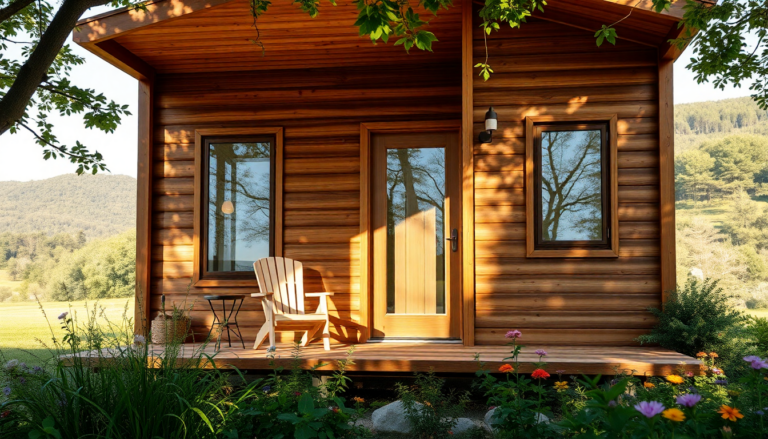Argomenti trattati
The phenomenon of tiny homes is more than just a passing trend; it reflects a lifestyle choice that embraces simplicity and a deeper connection with nature. Imagine living in a space that measures no more than 70 square feet—sounds cozy, right? Yet, these compact dwellings challenge our traditional ideas about what a home should be. It’s intriguing, though, that despite their small size, the complexity of their design often comes with a surprisingly hefty price tag. This growing interest in tiny homes signals a significant shift in consumer preferences, emphasizing sustainable and minimalist living.
The Allure of Tiny Homes
In my experience, the charm of tiny homes lies in their delightful mix of aesthetics and practicality. Picture a quaint cottage, just 54 square feet, reminiscent of the picturesque Cotswolds, complete with white-painted clapboard siding and softly blurred windows for added privacy. Doesn’t that evoke a sense of peace? Such features resonate with individuals who appreciate traditional design over stark modernism.
But it’s not just about looks. Tiny homes are crafted with functionality at their core. Think about smart features like temperature-activated fans for ventilation and easy-open windows that invite in the fresh air—these homes are designed for comfort while being eco-friendly. Just imagine yourself savoring a glass of iced coffee, gazing out at a beautiful landscape. Sounds idyllic, doesn’t it?
Data-Driven Insights on Tiny Home Market Trends
I find it fascinating that the data reveals a compelling narrative about the tiny home market. Recent analyses show a rising demand for compact living solutions, particularly among millennials and Gen Z. As our cities become more crowded and housing prices keep climbing, tiny homes are emerging as attractive, affordable alternatives. This trend is part of a larger societal shift towards minimalism and sustainability—where experiences take precedence over material possessions. Isn’t it refreshing to see such a change?
Moreover, the market is bursting with innovative designs that cleverly incorporate essential amenities without sacrificing space. Many tiny homes now feature lower and upper staging shelves, electrical outlets, and even USB ports to meet the needs of modern living. A recent case study showcased a specific tiny home model that received glowing reviews for its spacious design and high-quality features, proving that consumers are indeed willing to invest in compact homes that marry functionality with aesthetic appeal.
Practical Implementation and Considerations
If you’re thinking about diving into the world of tiny homes, it’s crucial to understand that implementation goes beyond just picking the right model. You’ll also want to get familiar with the logistics of living in a smaller space. Most of these homes arrive pre-assembled, complete with pre-drilled holes and clear instructions, making the construction process a breeze. This simplicity can be particularly appealing for first-time homebuyers or those looking to downsize. Who wouldn’t want an easy start?
However, it’s vital to keep in mind the zoning laws and regulations that could influence where you can place your tiny home. Researching local ordinances on alternative housing is essential to ensure compliance. Additionally, grasping the long-term costs of maintaining a tiny home—like utilities and property taxes—is crucial for smart budgeting. After all, you wouldn’t want any surprises down the road!
Key Performance Indicators and Optimization Strategies
As the tiny home market continues to evolve, keeping an eye on key performance indicators (KPIs) becomes essential for grasping market dynamics. Metrics like customer satisfaction rates, sales growth, and return on investment (ROI) are pivotal in evaluating the success of tiny home models. By tracking these KPIs, manufacturers and sellers can refine their offerings to better align with consumer needs. Isn’t it exciting to think about how data can drive innovation?
In conclusion, the tiny home movement encapsulates a profound societal trend towards minimalism and sustainability. By embracing the charm of compact living, consumers not only express their lifestyle choices but also contribute to a greener future. As this market continues to grow, it will be fascinating to see how it reshapes our understanding of home and community. What do you think? Are you ready to explore the tiny home lifestyle?

